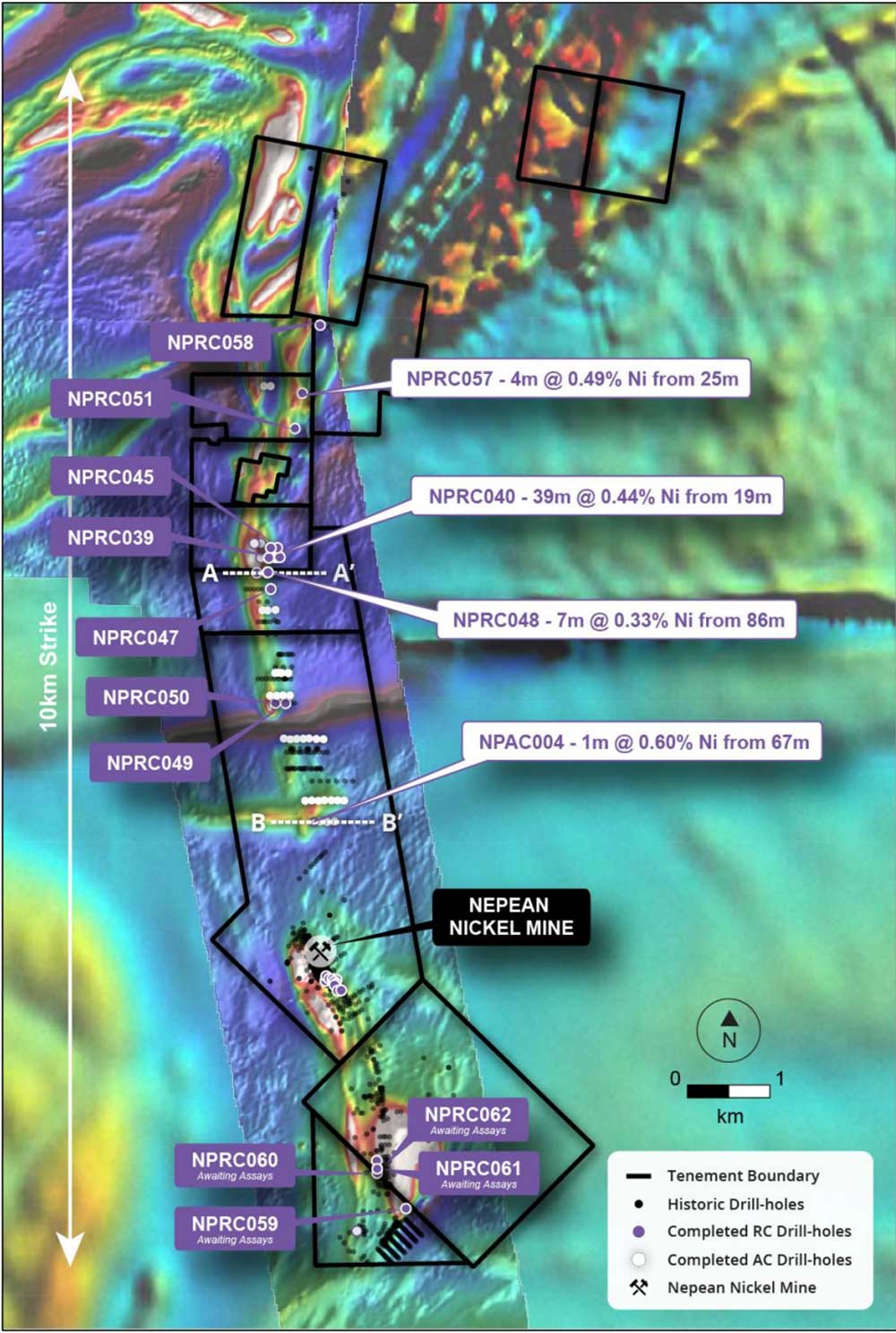Auroch is homing in on new nickel sulphide discoveries at Nepean
Mining
Assay and downhole electromag (DHEM) results from Auroch Minerals’ (ASX:AOU) maiden drill program at the high-grade Nepean nickel project “have been a huge success”, the company says.
Nepean – near Coolgardie in WA — was the second nickel operation ever in Australia, producing 32,202 tonnes of nickel metal at an average recovered grade of 2.99 per cent between 1970-87.
It closed because of low nickel prices — not because it ran out of metal. The regional upside is also huge.
Recently completed drilling was designed as a first-pass “reconnaissance” test of several magnetic high anomalies which extend along 10km of strike from the historic mine.
Standout results include:
“Whilst still at the early exploration phase, we are thrilled to see very promising signs that we are potentially homing in on new nickel sulphide discoveries at Nepean,” Auroch managing director Aidan Platel says.
“Due to the distinct lack of historical drilling, our conceptual exploration target was based almost purely on the 10km of strike of aeromagnetic anomalies extending from the historic Nepean nickel mine, and hence our first phase of drilling was to test this theory.”

The several thick zones of elevated nickel intersected close to the footwall contact is typical of Kambalda-style nickel sulphide deposits, Platel says.
Now it’s just a case of dialling in on the motherlode.
“The programme has been a huge success, with the drill-holes identifying thick sequences of high MgO fertile ultramafic units overlying a footwall basalt, the perfect setting for Kambalda-style nickel sulphide mineralisation,” he says.
“Furthermore, several thick zones of elevated nickel were intersected to confirm the disseminated sulphides logged by our geologists in the field, which is extremely encouraging.
“In other words, we know that we have nickel sulphide mineralisation present in the right geological setting along strike from the historic Nepean nickel mine, and now it is a case of building on this information to vector in on the potential massive nickel sulphide ‘channel’ mineralisation that is typical of Kambalda-style nickel deposits.”
Down Hole Electromagnetic (DHEM) surveys have identified several conductors coincident with the elevated nickel intersections, providing discrete high-priority drill targets, Platel says.
“The presence of DHEM conductors coincident with these zones of elevated nickel give us excellent discrete targets to immediately test with the next phase of drilling, and the high-powered ground MLEM survey currently underway at Nepean is expected to add further targets for drill testing,” he says.
EM surveys map sub-surface changes in electrical conductivity and are a useful tool for finding nickel sulphides.
The next phase of drilling to test these targets is scheduled to commence in early May.
This article was developed in collaboration with Auroch Minerals, a Stockhead advertiser at the time of publishing.
This article does not constitute financial product advice. You should consider obtaining independent advice before making any financial decisions.